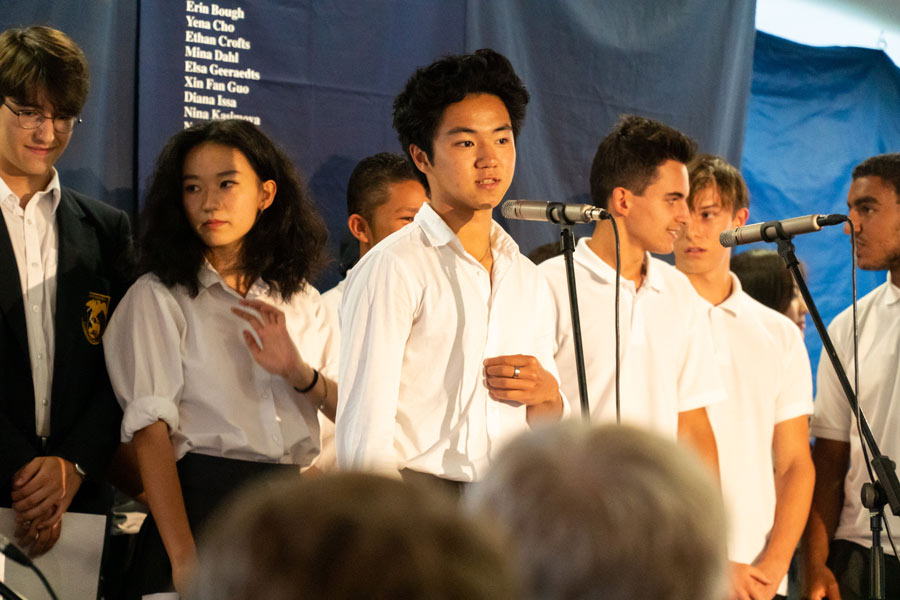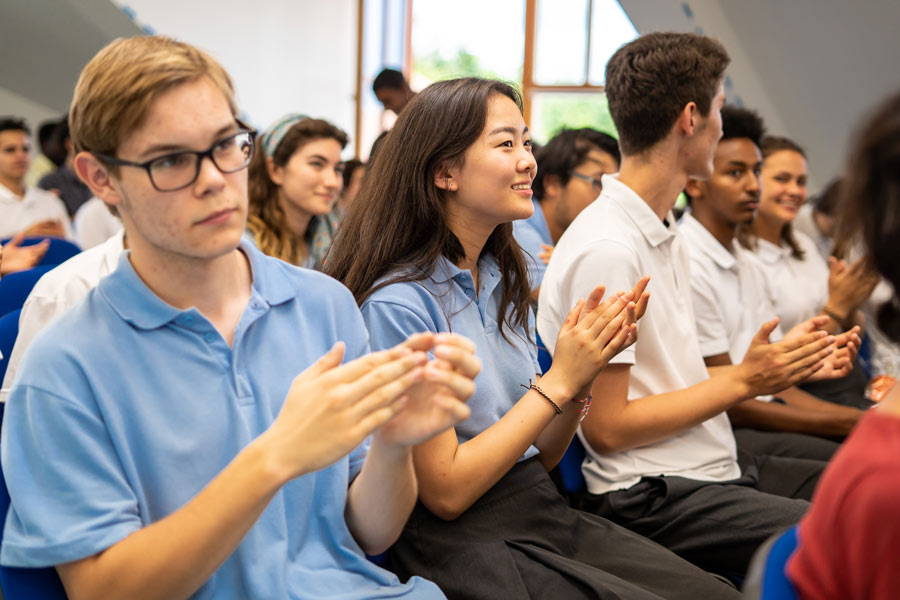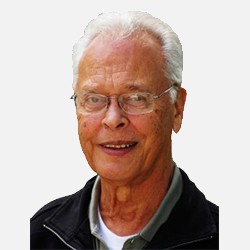The views expressed in our content reflect individual perspectives and do not represent the authoritative views of the Baha'i Faith.
Few would disagree that the world our children live in today represents one of unprecedented opportunities – as well as the very real dangers left to them by preceding generations.
On the unprecedented opportunity side of the ledger, here’s an example: during a recent trip to South India, I visited some of the most modest of homes, each of which contained a computer. That window on the world gives children who live there access to a massive volume of information, signaling that the last barrier to gaining access to knowledge has all but disappeared.
But in those very same environments, in the homes of both the underprivileged as well as the highly privileged, lurk dangers of gigantic proportion. Sadly, many parents seem unaware of the severity of those dangers.
In just one horrifying example, the chief cause of death among young people in the United States last year, for the first time in our nation’s history, wasn’t gun violence, car crashes or suicide – it was opioid overdoses. Because of this unprecedented epidemic of addiction, the Council on Foreign Relations reports, overall American life expectancy has actually declined for the past three years.
The social structures that once existed to ensure stability and civility have simply disintegrated and disappeared, largely because of the spiritual decline taking place at all levels of human society. The Baha’i teachings point out the symptoms and the consequences of this general decline:
The spread of lawlessness, of drunkenness, of gambling, and of crime; the inordinate love of pleasure, of riches, and other earthly vanities; the laxity in morals, revealing itself in the irresponsible attitude towards marriage, in the weakening of parental control, in the rising tide of divorce, in the deterioration in the standard of literature and of the press, and in the advocacy of theories that are the very negation of purity, of morality and chastity – these evidences of moral decadence, invading both the East and the West, permeating every stratum of society, and instilling their poison in its members of both sexes, young and old alike, blacken still further the scroll upon which are inscribed the manifold transgressions of an unrepentant humanity. – Shoghi Effendi, The Promised Day is Come, p. 114.
In the past the privileged could find refuge for themselves and their families by moving to upscale neighborhoods they considered safe havens, free from the most challenging aspects of the social environment surrounding them. But, as with the metastasis of cancer cells, the very nature of social pathology has become so widespread that such societal ills can no longer be contained within certain geographical areas and social circles as once believed. In fact, the ubiquitous nature of social pathology and its resultant terrorism, wars and environmental destruction has reached such frightening levels that increasing numbers believe the very survival of civilization now hangs in the balance.
People of faith continue to believe that, just as with similar periods of the past, somehow and some way humanity will eventually be able to stem the tide of this decline, and reverse the ominous trends. While I, too, fall within this group of optimists, at the same time I cannot ignore the inescapable and mounting evidence of this frightening condition. Good individuals, especially our children, are falling prey to the negative elements that surround them, especially if they do not have adequate spiritual and social support environments to assist them as they continue on their respective journeys in life.
In light of all these factors, I believe the time has come to establish two social mechanisms to serve as complementary support systems for our children and youth:
- Spiritual Safety Zones – places within each community where our children and youth can spend large portions of their free time engaged in a variety of productive activities that are essentially spiritual and educational in nature. These spiritual safety zones will help insulate and protect young people from the destructive elements in their school, neighborhood, and local community environments.
- Rarefied Residential Schools – educational institutions especially for those children from communities too small or too lacking in resources to create their own, in which they can spend four to six of their adolescent years consolidating their identities while at the same time gaining an outstanding academic education. These environments must possess the love, intellectual and spiritual stimulation, rigor and discipline essential to drawing out and refining those “gems of inestimable value” spoken of in the Baha’i teachings:
Man is the supreme Talisman. Lack of a proper education hath, however, deprived him of that which he doth inherently possess. Through a word proceeding out of the mouth of God he was called into being; by one word more he was guided to recognize the Source of his education; by yet another word his station and destiny were safeguarded. The Great Being saith: Regard man as a mine rich in gems of inestimable value. Education can, alone, cause it to reveal its treasures, and enable mankind to benefit therefrom. – Baha’u’llah, Gleanings from the Writings of Baha’u’llah, pp. 259-260.

Two students in class at Townshend, a Baha’i inspired International School that emphasizes moral development along with intellectual development.
Now, when I propose these ideas I often get this initial reaction from parents: “Oh, I just can’t be away from my child for such a long period of time.”
Yes, if the immediate social and educational environments did their jobs, this would be a very compelling argument. Ideally, the child should not have to experience such long periods of time away from home if the parents were in control and allowed, relatively free of negative influences, to fulfill their function as parents. But from my observations of late, such environments simply have all but disappeared. The best of parents, those who love their children more than life itself, have seen their children devoured by the enticing lure of drugs, alcohol, sex and rampant materialism at a time in their lives when they are most vulnerable, and least able to cope with them due to their developmental stage.
The Baha’i teachings offer a compelling antidote – the strong framework and firm foundation of building character in children as a primary part of their early education:
The root cause of wrongdoing is ignorance, and we must therefore hold fast to the tools of perception and knowledge. Good character must be taught. Light must be spread afar, so that, in the school of humanity, all may acquire the heavenly characteristics of the spirit …
Know that this matter of instruction, of character rectification and refinement, of heartening and encouraging the child, is of the utmost importance, for such are basic principles of God. …
It is extremely difficult to teach the individual and refine his character once puberty is passed. By then, as experience hath shown, even if every effort be exerted to modify some tendency of his, it all availeth nothing. He may, perhaps, improve somewhat today; but let a few days pass and he forgetteth, and turneth backward to his habitual condition and accustomed ways. Therefore it is in early childhood that a firm foundation must be laid. While the branch is green and tender it can easily be made straight.
Our meaning is that qualities of the spirit are the basic and divine foundation, and adorn the true essence of man; and knowledge is the cause of human progress. – Abdu’l-Baha, Selections from the Writings of Abdu’l-Baha, pp. 136-137.
But rather than focusing on the “qualities of the spirit,” many modern cultures turn our children loose to face a welter of negative and even deadly influences when they go to school.
With few other choices, we send them into a morally bankrupt cultural environment whose very values have carried hedonism to an unprecedented level, and whose influence is so powerful and ubiquitous that the effects all but preclude their children from being able to resist its overwhelming grasp. So where can we turn? What possible safety zone can we establish for our children and youth?
Well, I have just returned from one such safety zone, a place I have known and visited now for 17 years, a Baha’i-inspired institution of learning in the Czech Republic in Eastern Europe called the Townshend School, which does its utmost to follow the Baha’i ideal that encourages every parent to:
… educate their little ones from their earliest days, thoroughly train them, rear them to have a goodly character and good morals, guide them to all the virtues of humankind, prevent the development of any behaviour that would be worthy of blame, and foster them in the embrace of Baha’i education. Thus shall these tender infants be nurtured at the breast of the knowledge of God and His love. Thus shall they grow and flourish, and be taught righteousness and the dignity of humankind, resolution and the will to strive and to endure. Thus shall they learn perseverance in all things, the will to advance, high mindedness and high resolve … – Abdu’l-Baha, Selections from the Writings of Abdu’l-Baha, pp. 124-125.

Townshend’s approach towards education is based upon the concept that each individual is a noble being.
Now, after having visited the school many times, I can truly say that what she had initially conveyed was indeed quite an understatement!
As one who has spent 46 years in education, serving at all levels, from elementary to advanced graduate studies, both within the public as well as private sectors, I think I can say that no perfect educational environments exist anywhere on this planet. Perfection will always remain an ideal which, by its very nature and definition, is beyond our reach, but some places have simply done a much better job than others.
As for Townshend, I can attest that it has a superb academic program. The students who attend represent a cross section of young people from around the world, including all of the challenges young people face growing up in today’s civilization. After all my time there, I’ve tried to understand what makes Townshend special, and therefore different from the hundreds of schools I have experienced during my entire professional career. I can best express it this way: Townshend has a quality of “moreness” that cannot be fully accounted for by even the closest examination of every single person who makes up that educational environment.
Let me attempt an explanation by way of an analogy. An alloy is a unified combination of metals that when combined create an amalgam with a greater tensile strength than that of any single one of those metals. A reductionist line of reasoning would predict that the combined strength should be the average of the component metals proportionate to their representation – but an alloy has several times the strength of the sum of the individual strengths of its component metals. Now, where did that “moreness” come from? Disaggregate the metals and it disappears; combine them and miraculously there it is again.
Although this is a much more complex issue to discuss, by minds much more advanced than mine, the inexplicable phenomenon represented in this simple example ultimately led to the toppling of Newtonian physics and the whole mechanistic-reductionistic tradition that dominated scientific discourse for over two centuries.
By merely stepping on to the Townshend campus, one begins to sense that alloyed and allied quality of moreness – student with student; teachers with students; students with administrators; administrators with kitchen help and other non-certificated staff; between dorm parents and students; between students and their dorm counselors; both with the house parents and other staff.
You sense it before you can quite put your finger on what has brought it all about. Then, slowly, you see it in the way the members of this community relate to each other – they have a close, loving bond of unity and purpose that goes beyond just friendship.
While I don’t think I can fully define it in words, I would say the strongest qualities of that loving bond include a high level of respect, certainly mature affection, a kind of warmth that can only come from mature spiritual intimacy, and a level of mutual caring that solely emerges from having achieved a firm footing grounded in truly spiritual values.
However that quality of moreness developed, it makes the environment of Townshend one in which quality education can thrive, which rewards all individuals who struggle to live up to the wholesome spiritual values they’ve learned, a place where all feel the therapeutic effects of what a truly spiritual environment can potentially offer and foster, and one in which even those of us who have experienced a kind of brokenness can truly become whole again.
You see those spiritual qualities everywhere at Townshend: a kind word expressed; a hug for one in need or just for no apparent reason; the gentle embrace of a student by a 24-year-old former graduate whose “brokenness” was healed by being on this campus, and who now, after graduating from Townshend and serving as a volunteer between high school and university at an orphanage in Honduras has single-handedly raised the money for two of those promising orphaned children to attend Townshend – and who now have graduated and done so with distinction. As an added point, he was not able to get them out of Honduras without assuming legal guardianship of them.
Some might think of Townshend as a residential school for the children of the wealthy, but nothing could be further from the truth. The last I checked I learned that a sizable portion of the students are local Czechs who attend as day students, most of whom require scholarship assistance. This represents one of the finest outreach efforts in the Czech Republic on the part of Baha’is, and perhaps in of all Eastern Europe. A sizable number of the remaining students come from Baha’i families who live in difficult parts of the world where good educational resources simply don’t exist. Townshend accommodates this need by offering scholarship assistance and by recruiting sponsors. Also, Townshend takes in and educates some children whose previous situations proved so toxic that in all likelihood they simply would not have had the strength to spiritually survive if they remained in their home environments.
Townshend’s graduates have gone out and been accepted at some of the finest universities in the world, have achieved high academic distinction at them, and now have scattered all over the globe, serving humanity and participating in the collective Baha’i effort to improve the world:
It is appropriate and befitting that in this illumined age – the age of the progress of the world of humanity – we should be self-sacrificing and should serve the human race. – Abdu’l-Baha, Selections from the Writings of Abdu’l-Baha, p. 68.
About three-quarters of a century ago a financially well-off family hired an amazing nurse by the name of Anne Sullivan to serve as a combination nursemaid and teacher for a rather wild and aggressive blind and deaf child by the name of Helen Keller. Sullivan set for herself a task then considered impossible: to break through the child’s barriers of blindness and silence. Helen Keller eventually emerged as an extraordinarily gifted adult, a soul who made enormous contributions to humankind.
You can see the success achieved by Anne Sullivan represented first in a book, followed by a Broadway play, and then a movie, each chronicling the accomplishment of her incredible feat. All of these forms of documentation bear the very well-deserved title: “The Miracle Worker.”
As noble as this effort truly is, the fact remains that Anne Sullivan affected the life of only one person. The staff of Townshend have done this for hundreds of amazingly accomplished young people, many of whose gifts, whose “gems of inestimable value,” might have remained undiscovered and therefore unrealized, had it not been for the vision of Ramona and Reza Reyhani, founders of Townshend, followed by the incredible staff – teachers, house parents, counselors, and volunteers – who serve at this modern day miracle of a Baha’i-inspired institution.


















Comments
Sign in or create an account
Continue with Googleor